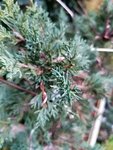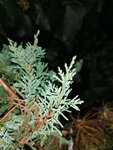It's pretty amazing how many different varieties of Juniper there are and how much the foliage can vary from one variety to the next. Some days I start to feel a bit weary with the look of Procumbens Nana. As a beginner they were among my first Junipers.
I really like the deeper lusher greens of Shimpaku, and I see why they are so common and popular. I also really like the needle foliage and blues of my Pacific Shore and a variety of Common Juniper that I have. I don't think I've seen much use of the Common Juniper.
So what varieties of Juniper do you prefer, what is it about the characteristics of their foliage? I'd love to see pictures that highlight the foliage.
I really like the deeper lusher greens of Shimpaku, and I see why they are so common and popular. I also really like the needle foliage and blues of my Pacific Shore and a variety of Common Juniper that I have. I don't think I've seen much use of the Common Juniper.
So what varieties of Juniper do you prefer, what is it about the characteristics of their foliage? I'd love to see pictures that highlight the foliage.









